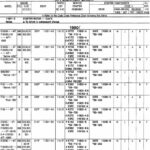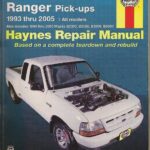Revamp Your Ford Ranger 2002 With A New Radiator For 3.0 Liter Manual Transmission: Follow Our Step-by-Step Guide Now!
Replacing Radiator in Ford Ranger 2002 3.0 Liter Manual Transmission
Introduction
Replacing radiator in Ford Ranger 2002 3.0 liter manual transmission is a task that requires some knowledge and skills. A radiator is an essential component of your vehicle’s cooling system, and it helps regulate the engine’s temperature. Over time, the radiator can become clogged, damaged, or worn out, leading to overheating issues and other problems. In this article, we will discuss the steps involved in replacing a radiator in a 2002 Ford Ranger with a 3.0-liter engine and manual transmission.
What, Who, When, Where, Why, and How
What: Replacing the radiator in a 2002 Ford Ranger with a 3.0-liter engine and manual transmission.
2 Picture Gallery: Revamp Your Ford Ranger 2002 With A New Radiator For 3.0 Liter Manual Transmission: Follow Our Step-by-Step Guide Now!


Who: Anyone with basic knowledge and experience in car repairs and maintenance can replace a radiator.

Image Source: ytimg.com
When: When the radiator is damaged, clogged, or worn out and causing overheating issues.
Where: This task can be done in a garage or any suitable location with the right tools.
Why: A damaged or worn-out radiator can lead to engine overheating and other related problems.

Image Source: ytimg.com
How: To replace the radiator, you will need to drain the coolant, remove the old radiator, install the new one, and refill the coolant.
FAQ
Q: How do I know if my radiator needs to be replaced?
A: Signs of a damaged radiator include overheating, leaking coolant, low coolant levels, and rust or corrosion.
Q: Can I replace my radiator myself?
A: Yes, you can replace your radiator yourself if you have the necessary knowledge, skills, and tools.
Q: How long does it take to replace a radiator?
A: The time it takes to replace a radiator varies depending on your level of experience and the complexity of the job. On average, it can take between 2-4 hours.
Key Features
When replacing a radiator in a 2002 Ford Ranger with a 3.0-liter engine and manual transmission, it’s important to consider the following key features:
Fluid Capacity: The radiator should have a capacity of 6.2 quarts.
Technologies: The radiator should be made of high-quality materials that can withstand high temperatures and pressure.
User-Friendly Features: The radiator should be easy to install and maintain, with clear instructions and proper mounting points.
Troubleshooting Guides: The manual should include troubleshooting guides and diagrams to help diagnose and fix any issues that may arise.
Pros and Cons
Pros:
– Replacing your own radiator can save you money on labor costs.
– You can ensure that the job is done properly and with high-quality parts.
– You can learn new skills and gain experience in car repairs and maintenance.
Cons:
– It can be time-consuming and challenging, especially if you’re not experienced.
– You may need specialized tools and equipment to complete the job.
– If you make a mistake, it could lead to further damage and costly repairs.
Conclusion
Replacing the radiator in a 2002 Ford Ranger with a 3.0-liter engine and manual transmission is a task that requires some knowledge and skills, but it can be done with the right tools and instructions. By following the steps outlined in this article, you can ensure that your vehicle’s cooling system is functioning properly and avoid issues such as overheating and engine damage. If you’re not comfortable performing this task yourself, consider seeking assistance from a professional mechanic.
This post topic: Manual



